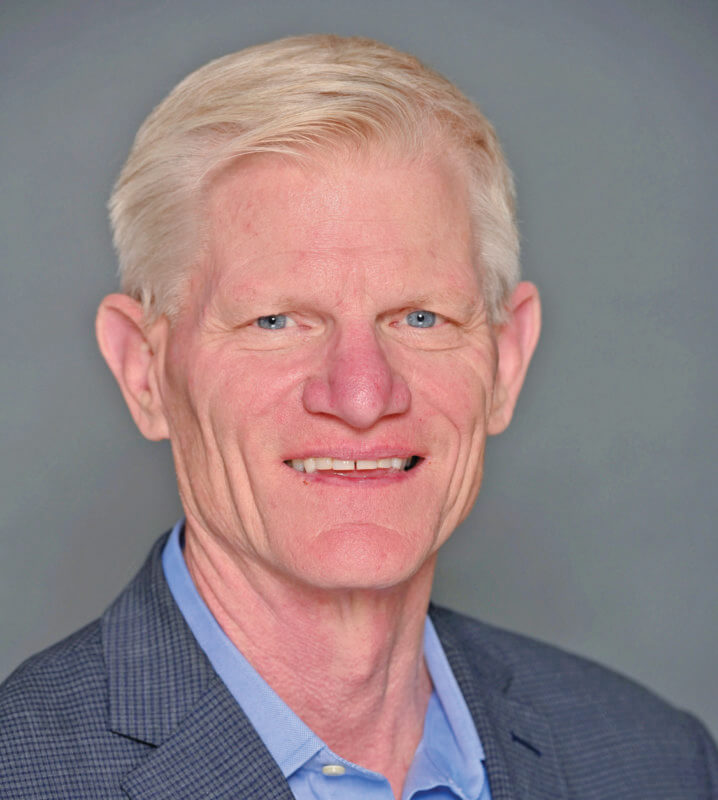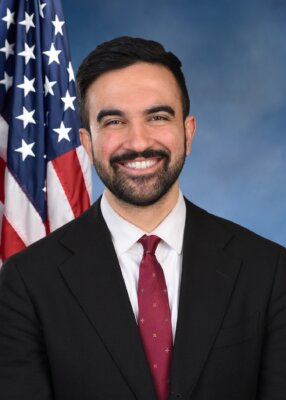Letters to the Editor: July 24
Encourage adoption of resolution supporting due
To the Editor:
Recent federal immigration enforcement actions have raised concerns about due process protections in our communities. Reports include detention without legal representation, use of detainers without sufficient evidenc, and arrests without criminal charges. Additionally, incidents of criminals impersonating federal officials have created public safety concerns.
The city of Rutland responded to these concerns last April by unanimously passing “A Resolution Condemning Attacks on Due Process and Affirming the Constitutional Rights of All People in Rutland.” Since then, 15 other municipalities — Burlington, Wallingford, Rockingham-Bellows Falls, Brandon, Jericho, Pittsfield, Bennington, Shaftsbury, Pomfret, Middletown Springs, Rutland Town, Vergennes, East Montpelier, Manchester and Pownal — have adopted similar resolutions. Those resolutions are available here.
However, the elected officials of many Vermont municipalities have dismissed the idea of adopting such resolutions, often without even informing their constituents that these issues were brought to their attention. Common reasons include: viewing this effort as partisan politics rather than constitutional protection; believing the resolution is unnecessary since officials have already sworn to uphold constitutional rights; or fearing federal retaliation.
Respectfully, these concerns miss the point. First, constitutional protections are not partisan, they protect all Vermonters regardless of political affiliation. Second, the resolution asks local officials to publicly reaffirm their commitment to constitutional principles at a time when these principles are being challenged. Third, silence in the face of federal lawlessness has not protected Vermont.
Our communities deserve leaders that will uphold our constitutional rights, and Vermonters have a right to know where their local officials stand. I encourage you to contact your local board members and ask them to consider adopting a resolution for your municipality. Attend board meetings, organize with neighbors and demand transparency about why your local officials support or oppose such measures.
Resolutions adopted by other municipalities can be adapted for yours. The time to act is now, before our constitutional protections erode further. Use your voice to protect your rights.
Peter G. Franzoni
Rutland
Jeep packed for adventure to whereabouts unknown
To the Editor:
In 1995, Susan Maguire married me and we built a house on Texas Hill Road. You welcomed us as we brought two boys into that home and allowed our roots to grow deep.
Our boys were growing into young men. We were living the dream.
Fast forward, the dreams are shattered.
But there you were. With a warm meal. A banana bread. A coffee at Parkside. A hug or just a breath on the deck. You have been the hand reaching for Marc and me, in the darkness.
Thank you.
Now, it’s time for me to go quietly into the night. My Jeep is packed for an adventure to whereabouts unknown.
How could I leave the people who love me most? It’s time.
For, if I look for it, it won’t be found. But when I see it, I will know it.
Marc and I are OK. We have each other, and we are grateful for you.
Joe Hoeppner
Hinesburg
(Joe Hoeppner founded Project Hoeppner with his wife Sue Hoeppner after their 17-year-old son Paul died by suicide in 2018.)
Misrepresentations in PFAS legislation and pesticide safety
To the Editor:
In light of recent communications from Pam Bryer, toxicologist at the Vermont Agency of Agriculture, regarding the presence of per- and polyfluoroalkyl substances (PFAS) in pesticides, it is crucial to clarify the realities surrounding PFAS legislation and the ongoing risks these chemicals pose to the environment and public health in Vermont.
On May 9, 2024, Act 131 (S.25) was passed by the Vermont legislature and signed into law by Governor Phil Scott on May 29, 2024. This act defines PFAS as a class of fluorinated organic chemicals containing at least one fully fluorinated carbon atom. However, misinformation continues to circulate regarding the regulation and safety of pesticides containing PFAS.
In an email to Dr. Lori Cragin, division director and state epidemiologist for the environmental health division at the Vermont Department of Health, dated May 23, 2024, Bryer made several claims regarding the potential presence of PFAS in pesticides within the Source Protection Area in Middlebury that warrant correction.
Below are several of Bryer’s claims, followed by factual clarifications:
Claim: “PFAS are not allowed in pesticides.”
Fact: The EPA continues to register PFAS-containing active ingredients. For example, Minnesota Department of Agriculture has identified 95 EPA-registered pesticide active ingredients as PFAS in use in Minnesota.
Claim: “Soil depth penetration studies are part of the required data collected by EPA for pesticide registration.”
Fact: These studies typically focus only on the active ingredient, ignoring adjuvants and so-called inert ingredients that may significantly influence leaching behavior, particularly in Vermont’s sandy soils and shallow groundwater zones.
Claim: “There are pesticides that are never found deeper than 5 cm down in the soil following an application because of the chemical’s soil-binding behaviors.”
Fact: Such generalizations are unsubstantiated. Soil composition, climate and formulation all influence chemical behavior. In Vermont groundwater PFAS contamination is real and well-documented. Many PFAS are highly water soluble and readily move through soil and water. This solubility and chemical persistence allows them to travel great distances from where they were applied.
Claim: “It is sometimes hard to know what the public means when they say ‘PFAS.’”
Fact: Vermont residents, including those of us in VTPAPAN and Middlebury Airport Neighbors Association (MANA) understand that PFAS vary widely but are still dangerous to life as a class of chemicals combining fluorine and carbon. We are well aware of PFAS sources and pathways—including pesticide formulations. This comment is dismissive of public understanding and concern.
Claim: “The EPA has clearly stated that the presence of PFAS (at the level of quantification) in any pesticide product is a violation of FIFRA.”
Fact: This claim lacks supporting documentation. The EPA continues to allow PFAS-based ingredients in registered products, contradicting Bryer’s assertion.
Claim: “What is confusing many people, however, is that some chemicals that have already undergone full regulatory review are now being called PFAS despite not sharing any of the same characteristics as those chemicals traditionally referred to as PFAS.”
Fact: Vermont law, like similar statutes in Maine and Minnesota, follows the OECD definition of PFAS, which includes a broad range of fluorinated organic compounds, many of which appear in pesticide ingredients.
In 2022, approximately 6,800 lbs. of pesticides containing PFAS were reported in use, highlighting the pressing need for transparency and action.
Pam Bryer’s denial of the presence of PFAS in pesticides not only misinforms the public but also contributes to the ongoing environmental and health crisis affecting Vermonters. Her refusal to acknowledge this reality undermines efforts to safeguard our health, particularly that of future generations. As a member of the Act 131 Working Group, her influence may have played a role in the decision to exclude pesticides from the consumer products banned by S.25.
We urge Bryer to adhere to Vermont’s legal definition of PFAS, acknowledge the presence of these harmful substances in pesticides, and commit to the health and healing of Vermont’s environment from years of toxic land use. If she cannot align with these principles, we urge her to consider other employment opportunities.
We respectfully urge the Agency of Agriculture to take the following actions:
- Publicly affirm Vermont’s legal definition of PFAS and acknowledge the presence of these substances in pesticide products.
- Commit to transparent communication and science-based regulatory enforcement.
- Reassess the appropriateness of Bryer’s continued involvement in PFAS policy development, should she be unwilling to align with the law and public health priorities.
Sylvia Knight
Burlington
Are solar panels Vermont’s new sacred cow?
To the Editor:
What does Vermont mean to you?
If farms, forests and stewardship come to mind, please read on
In 1925, Vermont had over 3.3 million acres of agricultural land. Fast forward to 2022 and this number has dwindled to 543,096 acres.
Many factors have led to declines in agricultural land over the years but a recent contributor to this alarming trend is industrial-scale solar development which brings ecological devastation and threatens food security. Steep reductions in agricultural land, specifically due to industrial solar, are happening nationwide with several states such as Oregon, Pennsylvania and New Jersey passing laws and crafting legislation to protect agricultural land.
Out-of-state commodities investors, global corporations and renewable energy developers are purchasing and leasing land in Vermont because it is comparatively cheap and subsidies and tax incentives for renewable energy development exist as well as high market rates for the ownership of this ‘renewable energy’. Nearly all large solar projects developed by “Vermont solar developers” are sold to out-of-state hedge funds and investment banks after permitting or construction. This situation is creating the perfect storm for Vermonters and our cherished environment to be preyed upon while wealthy renewable energy developers and investors reap the benefits
Vermont is poised to become an industrial solar plantation with developers selling high value renewable energy power and renewable energy credits to the highest bidders. The power does not have to be used or stay in Vermont and other states can buy this power or the renewable energy credits and claim they have met their state’s “renewable energy mandates.” Corporations can also purchase these renewable energy credits to claim they are a “green” company, which then boosts their environmental-social governance rating and attracts investors.
Keep in mind, there is no energy transition happening. With the massive expansion and implementation of artificial intelligence and the internet of things in all sectors, energy consumption will continue to increase exponentially. Governments, healthcare, education, industry, Hollywood, sports teams and individual use of AI all contribute to this unfathomable growth and its unimaginable power and data storage demands. These technologies consume land, water and energy at rates never witnessed before. People have been sold a lie when it comes to the ‘energy transition’.
The days of reduced consumption are long gone. Striving for continued efficiency remains a worthy goal, yet industrial scale solar power, in our often cloudy Vermont, when sited in the wrong place, is inefficient, unreliable and destructive to entire ecosystems and food security.
It all sounds hypocritical because it is.
How do Vermonters feel about this?
On June 3, I visited a proposed industrial solar site in Fair Haven. This project would cover 110 acres — yes, 110 acres — of absolutely beautiful, high quality agricultural land. This project is under review at the Public Utility Commission.
It was heartbreaking to walk this land and picture it with the topsoil ripped off and the earth heavily compacted and covered with industrial solar panels, causing erosion and permanently compromising the health of this farmland. Especially given the fact that taxpayers are subsidizing this development — a form of corporate welfare — the power purchase agreement does not have to be established prior to approval; Vermont does not hold any guarantee of the power; Vermonters may be on the hook for higher electricity rates and increased transmission and distribution costs; developers are positioned to rake in unimaginable revenue; and the permanent loss of Vermont’s agricultural land is guaranteed.
This is clearly a lose-lose situation for Vermont. Sadly, this Fair Haven project is only one of several industrial-scale solar projects proposed at this time by the Connecticut-based commodities trading company — Freepoint Commodities, a/k/a VT Real Estate Holdings. In Shaftsbury, Freepoint Commodities has also applied to the Public Utility Commission for a 20MW solar project which has drawn significant opposition from the surrounding landowners and communities. The Shaftsbury project would cover 80 acres of prime agricultural land and rolling hillsides. This project includes 45 acres of deforestation with documented compromise to ecosystems and native species. There is also discussion of Freepoint’s 50MW industrial solar project proposal in Panton, which would host a 300-acre industrial solar plantation on mostly agricultural land
For years, the Vermont Agency of Agriculture, Food and Markets has been educating legislators at the State House about the alarming loss of prime agricultural land. The Democratic leadership has taken zero action to protect prime agricultural land and prevent Vermont from this predatory behavior by well-funded, lawyer-heavy renewable energy developers.
The controversial Renewable Energy Standard was passed last session by the supermajority, despite the governor’s veto. This Renewable Energy Standard mandates aggressive requirements for renewable energy in Vermont yet fails to address these unresolved issues of siting and project placement, appropriate industrial solar regulations, expensive distribution and transmission costs, ratepayer protections and the unreliable nature of renewable energy, especially in Vermont.
Special interests such as Renewable Energy Vermont, a well-funded trade group representing renewable energy developers, designed this legislation and lobbied hard for the Renewable Energy Standard. Democratic leadership further overlooked significant details such as property and education tax rates for renewable energy projects that benefit investment banks and hedge funds.
Grassroots environmental groups such as Vermonters for a Clean Environment, as well as the Department of Public Service, attempted to address these deficiencies and were ignored. Vermonters for a Clean Environment has continually advocated for the proper siting of renewable energy projects. Annette Smith, executive director, has regularly shared information and reports encouraging solar development on the built environment, meaning parking lots, buildings, homes, landfills, brownfields, in order to protect Vermont’s deeply cherished ecosystems, forest and agricultural lands.
Representative Rob North (R-Addison-3) introduced a recent bill to repeal the Renewable Energy Standard due to the risks of intermittent renewable energy and the heavily increased costs to Vermont ratepayers. Governor Scott’s administration has also offered a bill to amend the Renewable Energy Standard in an attempt to address the gaps that place Vermonters and our environment at risk.
Alison Despathy
Danville
(Alison Despathy is a member of the board of Vermonters for a Clean Environment.)
Related Stories
Popular Stories
If you enjoy The Charlotte News, please consider making a donation. Your gift will help us produce more stories like this. The majority of our budget comes from charitable contributions. Your gift helps sustain The Charlotte News, keeping it a free service for everyone in town. Thank you.
Andrew Zehner, Board Chair









